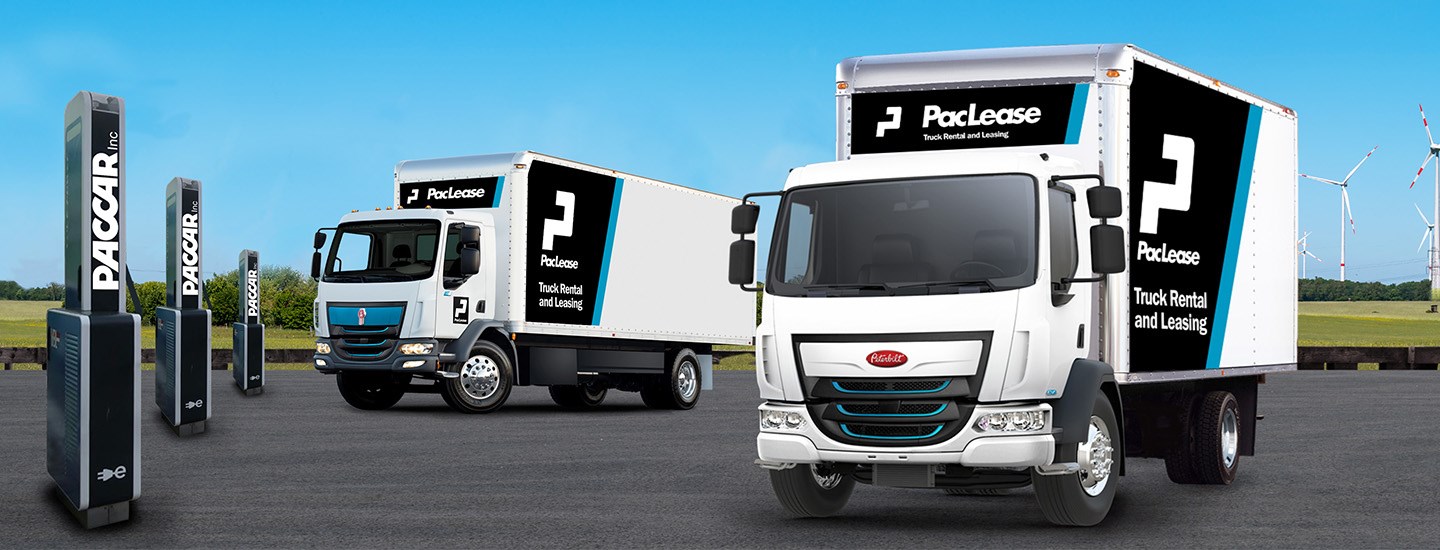Technology | Around the Industry | Leasing & Rental
October 13, 2020

Electric Fleets are Coming, and the Time to Prepare is Now
Ryan Prickette, Business Development Manager – EnTech Solutions
While development and manufacture of modern electric vehicles (EVs) has been ongoing for several years, it wasn’t until fairly recently that widespread adoption has become a matter of ‘when’ rather than ‘if.’ A recent article in the Wall Street Journal notes that businesses across the U.S. are now beginning to seriously consider electrifying their fleets. Public commitments are serving as an announcement to the rest of the U.S. economy, and fleet owners in particular: EVs are here, and the time to get ready is now.
Despite the excitement and promise of a rapidly changing world of electrified fleets, perhaps the biggest obstacle for fleet owners making the transition is developing a charging strategy. Of course, there is no one-size-fits-all solution for this. Charging an electric commercial vehicle presents a wholly different set of considerations compared to the convenience of fuel stations and charging is not as simple as plugging into a standard wall outlet. At the end of the day, however, the objective for fleet managers remains the same: safely handle and deliver all loads on time and as cost-effectively as possible.
The Challenge of Charging Infrastructure
The demand for electrical energy for vehicle charging is projected to increase as much as 15x over the next 10 years. This makes sense, considering that all the energy currently being provided to combustion engine vehicles via petroleum-based fuels must still be provided to EVs in the form of electrons. The stark reality is that the electrical grid in the U.S. and nearly all fleet depots are not yet prepared for the dramatic increase in electricity required to recharge an electrified fleet.
Again, the best solution to the charging problem will be different for every fleet. Outfitting existing facilities with charging equipment will likely be the most common solution to start, yet there are still major questions fleet owners should ask when looking to develop their own plan:
- Technical:
o Should the depot be outfitted for all anticipated future charging needs at once, or in phases?
o Does the facility have a large enough electric service from the utility to support the increased energy required for charging, or is an upgrade required?
o Could onsite power generation, like solar, wind, or generators be used to reduce or remove dependence on utility power? What are other businesses in the area doing in this regard?
- Economic/Regulatory:
o Based on the rate structure from the utility today and the projected charging requirements, what is the expected impact on electricity costs and how can they be optimized?
o How much will it cost to design, procure, and install the equipment?
o What permits are needed?
o Are there government subsidies or incentives to take advantage of?
o Should the equipment be owned or leased?
- Operational:
o How long will it take to outfit the depot with the right equipment?
o If facility and/or utility modifications are needed, how long does the application, scheduling, and commissioning process take? (Note: Sometimes this could take as long as a year.)
o How will construction impact operations?
o Where should chargers be installed in the facility for maximum operational efficiency?
o Should the charging infrastructure be permanent or moveable?
If this (non-exhaustive) list of considerations seems overwhelming, don’t be alarmed. Most if not all fleets are facing the same challenges. What’s important is following a disciplined and well-documented process of steps to:
- Evaluate the fleet and its existing depots.
- Develop a detailed electrification plan, including the number types of jobs to be electrified and how quickly the migrations need to occur for maximum value.
- Work with vehicle OEMs, utilities, and industry experts to design and deploy charging infrastructure that delivers the value identified in the electrification plan.
- Integrate new charging assets to existing information systems to enable further fleet optimization.
- Modify the original plan as more opportunities are uncovered.
EnTech Solutions is an industry leader in the design and execution of large-scale electrical solutions. In collaboration with PACCAR and PacLease, we are helping fleets of all sizes develop and execute their electrification strategies.
Learn how PACCAR is leading the way, read Press Release: PACCAR Extends Zero Emissions Leadership with Schneider Electric and EnTech Solutions (formerly Faith Technologies) to Provide Comprehensive Battery Charging Solutions.
Learn more about Electric Trucks at PacLease, read our News Release: PacLease Finding High Interest in Leasing Electric Trucks.
Find a Kenworth or Peterbilt location near you, visit PacLease Locations.
References:
The Answer to the Electric-Car Conundrum Isn’t Elon Musk
https://www.wsj.com/articles/the-answer-to-the-electric-car-conundrum-isnt-elon-musk-11600443935
Charging ahead: Electric vehicle infrastructure demand
https://www.mckinsey.com/industries/automotive-and-assembly/our-insights/charging-ahead-electric-vehicle-infrastructure-demand
